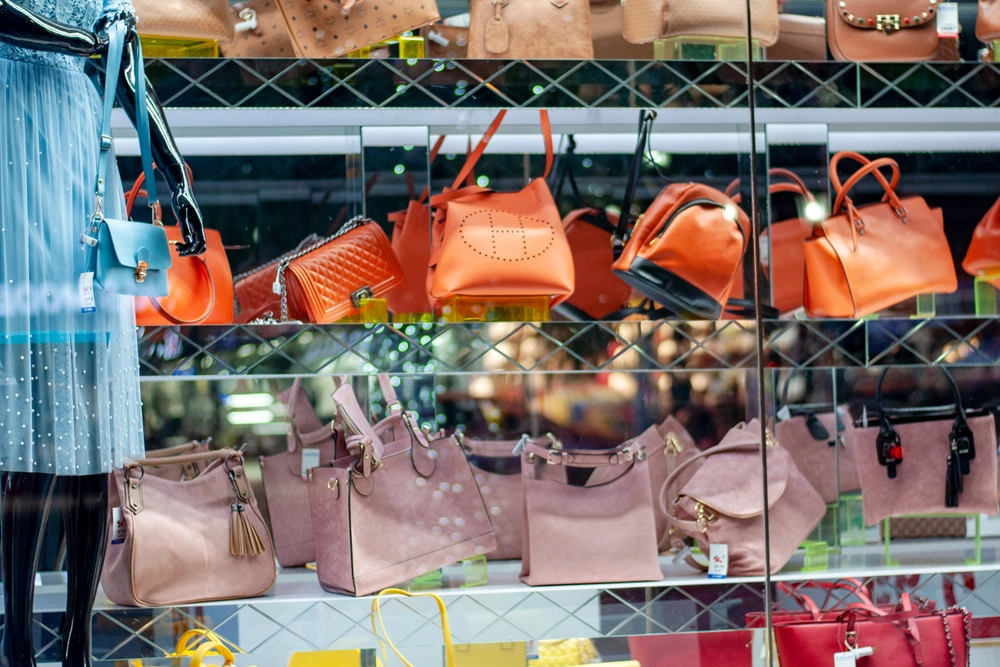
Retail Reduced – November 2024

By Nathan Peacey, Brighton Dube, Elin Bebbington, Ella McCarthy
3 Dec 2024 | 1 minute read
In this month's review of trends in the Retail and Consumer sector we look at the global problem of shop theft and the increasing demand for rapid delivery.
Trends in the Retail Sector in November 2024
Earlier this month the Justice and Home Affairs Committee, conducted an inquiry into shop theft in the UK and found that there were more than 443,000 incidents of shop theft recorded by police in the year to March 2024. In a letter dated 4 November 2024, addressed to the Minister for Policing, Crime and Fire Prevention, the Justice and Home Affairs Committee highlighted the “devastating” impact on the retail sector with a predicted £2 billion in annual losses. This year marks the highest-ever level of shop theft recorded since records began over 20 years ago. Workers in larger retail giants and independent stores alike, are branding shop-theft as “out of control“, and there are calls for police to treat the offence more seriously. These concerns were considered in the inquiry, and the committee have since concluded that they aim to:
- Phase out the term ‘shoplifting’ as there is a widespread perception that this term merely serves to trivialise the severity of the offence.
- Support the agenda of repealing the offence of “low-value shoplifting” under section 176 of the Anti-Social Behaviour, Crime and Policing Acts, which effectively decriminalises shop theft where the value of goods is less than £200.
- Support the creation of a standalone offence of assaulting a retail worker.
- Increase the funding of community-based reoffending and rehabilitation initiatives, to help cut the problem at the source.
- Improve both reporting and recording systems alike (for both Retailers and the Police).
- Support public awareness campaigns.
- Support the introduction of regulations and best practice guidance for facial recognition tools. Tools that cautious retailers are understandably hesitant to deploy due to associated risks concerning reputation and privacy.
These are significant steps forward in the ongoing attempt to tackle retail crime and will ensure retailers can protect their stocks, employees and finances to a greater extent.
It’s not only in England and Wales where shop-theft is on the rise. US retailers are experiencing similar trends, and reviewing their tools and routes for combatting shop-theft can be insightful for those ‘across the pond’. Security cameras in the US are now equipped with computer vision, ensuring they can pick up subtle details or cues such as shelf sweeps. Other US retailers have adopted facial recognition technology to identify customers suspected of past theft or other crimes. However, AI face recognition technology has drawn resistance, with a ‘third of US consumers saying they would shop less often or avoid shopping in a store whose cameras were equipped with this tech’ as per a recent survey from Coresight. ‘Rite Aid’ was banned from using facial recognition for surveillance purposes for half a decade, after charges of false accusations arose after erroneous matches of customers faces. This highlights the importance of trust, between customers and retailers and emphasises the value of using reliable and well tested AI.
Clearly ‘artificial intelligence’ can be useful in the retail industry, but caution and haste must be exercised simultaneously. The benefit of reducing the alarming levels of theft must outweigh the deterrence to customers, and the potential side effect of them choosing to shop elsewhere. These are crucial factors for the government to consider, especially a year after the launch of the Project Pegasus initiative.
Shop theft and retail abuse/violence unfortunately come hand in hand. Responsible retailers are already aware of this problem and our Retailers Against Harassment Certification is a great tool to assist retailers in evaluating the efficacy of their current actions and recommending the best next steps. Please get in touch if you would like to know more.
The demand for rapid delivery is accelerating. We are living in an age where the factors of ‘convenience’ and ‘speed’ often take priority over the ‘price-tag’. Covid-19 may have fast-tracked the need for a ‘rapid grocery delivery market’, but in the years proceeding, customers have been pushing for rapid delivery in almost every other market. ‘Boots’, ‘B&Q’, ‘Richer Sounds’ and ‘The Perfume Shop’ are all examples of brands who have listened and adapted to consumers ‘impatient’ preferences. However, ‘Getir’ an online speedy delivery service has made a recent ‘shock exit’ from the European and US market, which draws attention to the internal stresses and pressures on the rapid delivery market.
Rapid delivery is a service of high demand, so questions were inevitable when Getir made a speedy reversal out of the UK back in April. Getir cited its failures as a result of ‘rising operational costs in international territories’ and data collected by CACI revealed that Getir struggled with spending costs, with a 20% spending decline in April 2023 and a larger decrease of 30% in September that same year. Increased costs and reduced investment combined with an increase in the number of companies entering the rapid delivery market, resulted in a saturated and competitive market. A market that required (and still requires) consistent investment to succeed.
CACI data also reveals that the largest demographics who used Getir were, ‘struggling/cash-strapped families’ at 17%, ‘tenant living people’ at 15% and ‘prosperous professionals’ and ‘urban diversity’ at 10%. There is a wide range of demographic groups here, who are all now ‘up for grabs’ for other rapid delivery providers. There are key-takeaways and warning sign from CACI’s data collection, which show that it is best practice for rapid delivery providers to diversify their clientele, ensure they have established infrastructure and have strong and reliable investors. There is most certainly a balancing game between value and convenience in the rapid delivery market, and successful providers will look to maintain a diversified business model to guarantee future growth.
Christmas shopping is facing a squeeze this year, as slowing price drops and rising costs signal a shift in the inflation narrative. Retailers have reported that the recent decline in prices slowing, with shop prices decreasing by only 0.6%, a smaller drop compared to the 0.8% decline in October. Though deflation continues, the pace has eased, suggesting shoppers may no longer enjoy the reprieve they have had in recent months.
While deflation has decreased, household finances have also taken a hit. October saw a drop of household income by £1.98, with energy prices being a reason for the drop. The Centre for Economics and Business Research notes “these increased energy prices will persist over the rest of Q4, leading to slightly dampened spending power over the Christmas period“.
The holiday shopping season hasn’t been without its bright spots. Retailers offered early Black Friday deals, especially on electronics, fashion, and furniture. However, the broader picture was more subdued, with fewer discounts compared to previous years. Which? asked shoppers to tread carefully, citing misleading promotions. For example, a Boots hair dryer advertised at a 62% discount at £12.99 from £49.99 had never been sold at £49.99 in the past year.
The retail sector is navigating choppy waters, with £7 billion in extra costs looming by 2025 by way of higher national insurance, business rates, minimum wage hikes and a new packaging levy. The British Retail Consortium warns that that the sector is already working on slim margins, with the increased costs only serving to fuel higher prices.
Commenting on inflation, Helen Dickinson, CEO of the British Retail Consortium, stated “November was the first time in 17 months that shop price inflation has been higher than the previous month, albeit remaining overall in negative territory… with significant pressures on the horizon, November’s figures may signal the end of falling inflation“.
What This Means for Christmas
With the cost of essentials creeping upward and household budgets tightening, shoppers are feeling the pinch. While some may snag deals during Black Friday season, rising costs across fresh food goods and global commodities are creating a shadow over the holiday season. As the data rolls in, November may be remembered not for early gift-buying, but for marking the end of the inflation reprieve.
The biggest shopping season of the year is here – but while customers hunt for bargains, cybercriminals are hunting them. Black Friday, now stretched into weeks of online sales, has become a hunting ground for criminals using increasingly inventive methods to defraud shoppers. For retailers, this isn’t just a consumer problem – it’s a direct challenge to trust, reputation and ultimately bottom lines.
The stats retailers can’t ignore
Between November 2024 and January 2024, more than 16,000 cases of online shopping fraud were reported, with each victim losing an average of £695. Social Media platforms were implicated in 43% of these scams, making them the top arena for fraudsters. Online marketplaces weren’t far behind, featuring in 18.9% of reports. Social media’s dominance in fraud reports (43%) raises a red flag for brands relying on these platforms for marketing and sales. While online marketplaces (18.9%) also feature prominently in reports, the challenge is universal: wherever there are shoppers, scammers are not far behind.
The business impact of fraud
When fraudsters target shoppers, retailers often pay the price. Disputes over fake listings or fraudulent sales can result in chargebacks, higher transaction fees and increased scrutiny from payment providers. Worse, consumers burned by scams may lose trust in online shopping and make fewer purchases or blame legitimate platforms for not offering adequate protection.
“Creating a false sense of urgency is a tell-tale sign of a fraudster” says Adam Mercer, deputy director of Action Fraud. Retailers should be cautious about mimicking these strategies, as they could blur the line between genuine offers and fraudulent schemes.
Trust is more valuable than any discount
Despite concerns about rising living costs, shoppers are poised to spend big this year, with the average consumer expected to fork out £365 during Black Friday season (rising from £300 last year). This optimism isn’t lost on fraudsters, who are intensifying efforts. Three noted that close to 3,500 scams were reported to them daily during last year’s Black Friday season, with monthly scam reports up by 170,000 this year compared to 2023.
For retailers, it’s crucial to protect their digital storefronts and customer relationships during this period. Fraud doesn’t just damage customers – it damages brands.




























































